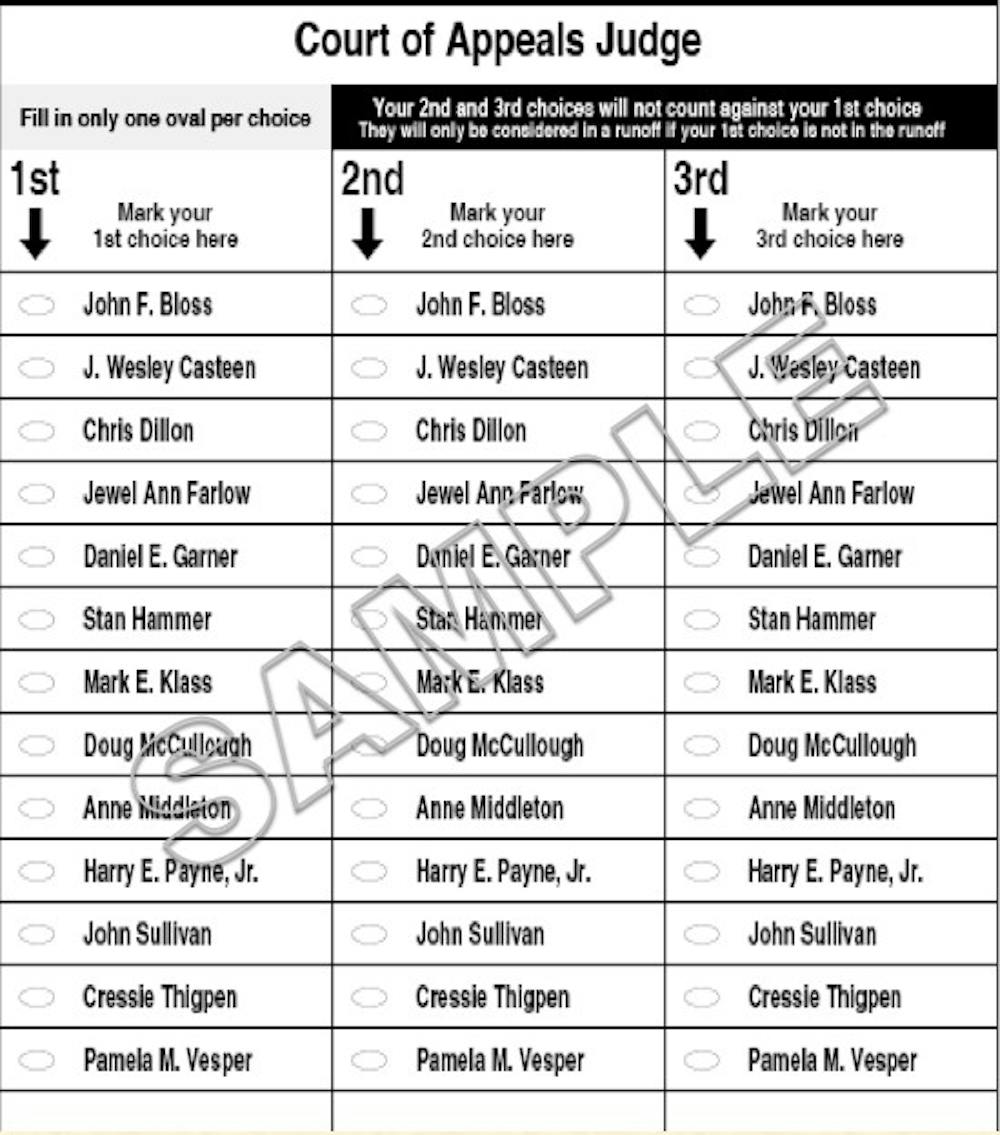With early voting underway, voters across the state are seeing a ballot unlike any they’ve seen before.
Every ballot in the state features a section of instant runoff voting, which is meant to eliminate the need for a second runoff election.
But it could also be confusing for voters.
While selecting a judge for the N.C. Court of Appeals, voters will select their first, second and third choices for election. If no candidate receives more than 50 percent of the first-place votes, the second- and third-choice votes are counted for each of the top two candidates in the final vote tally.
“If we had a second primary many voters would choose not to participate,” said Johnnie McLean, deputy director of administration for the N.C. Board of Elections.
This is because turnout for standard runoff elections has historically been very low, said Rob Richie, the executive director of Fair Vote, a Maryland-based elections reform think tank.
Thirteen judges will be listed on the ballot to compete for the spot vacated by Judge James Wynn, Jr. in August. Due to the fact that Wynn left so close to the general election, a recently passed state law requires his replacement be chosen via instant runoff voting.
Although instant runoffs save money by requiring only one election, many critics say they complicate the ballot and confuse voters.
To help remedy the situation, the state board printed instant runoff voting guides. Many county boards of elections, including Orange County, have guides at the polls.




